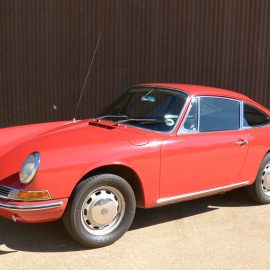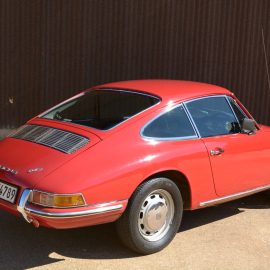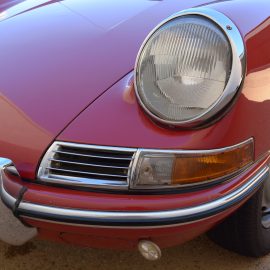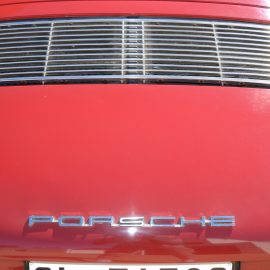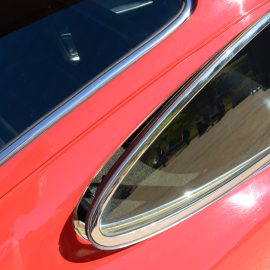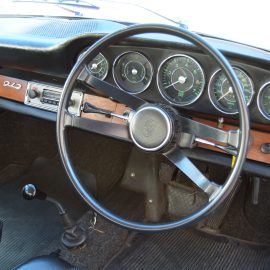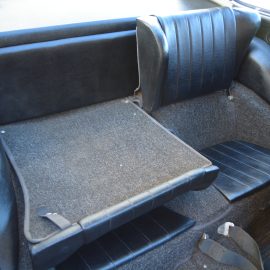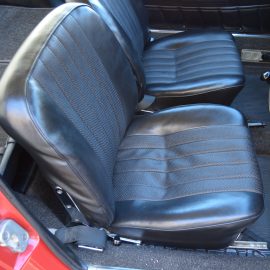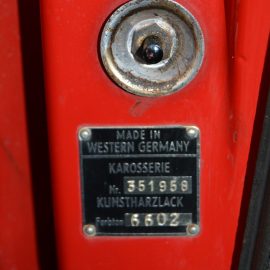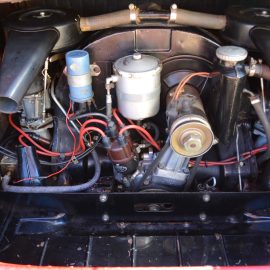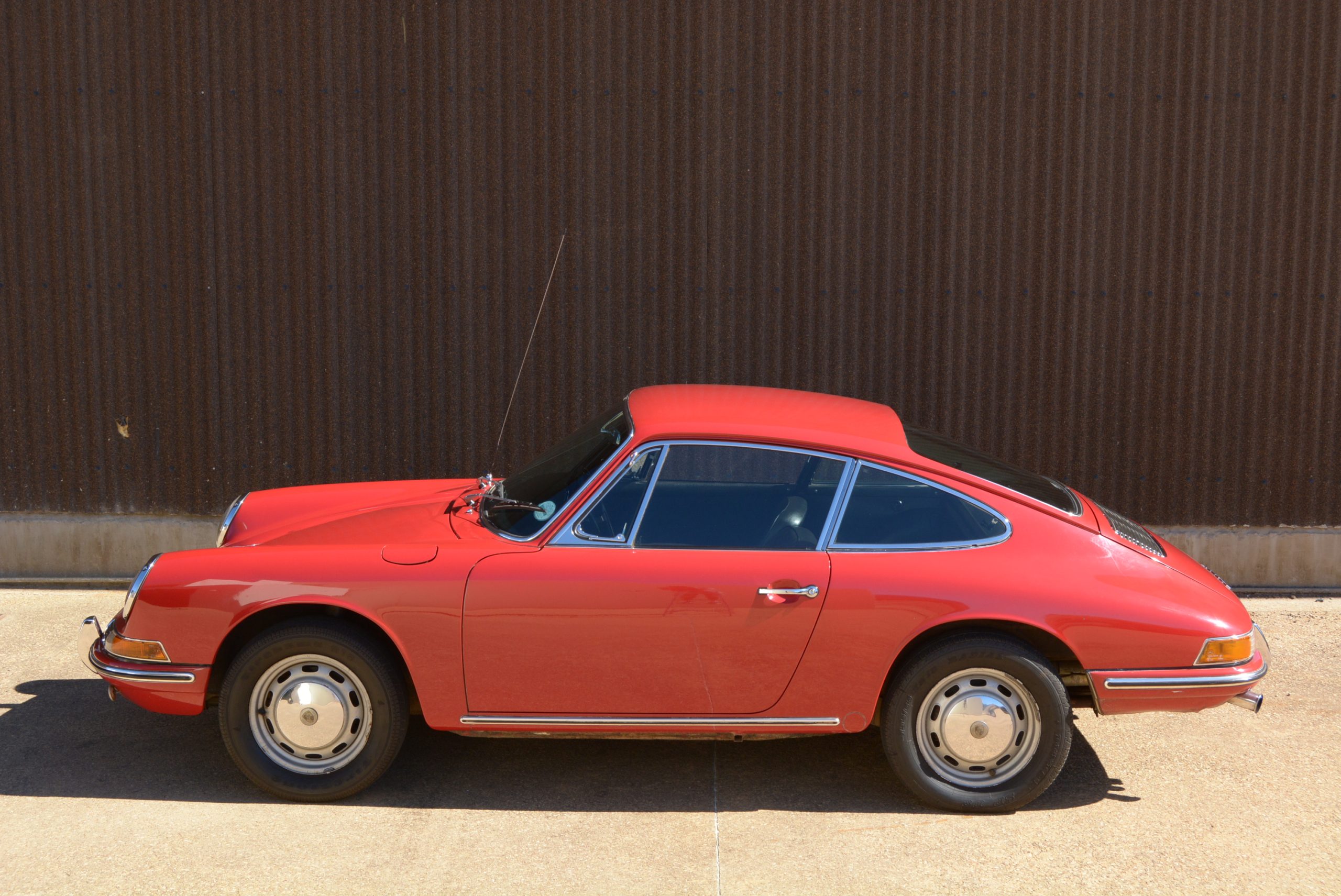
31 Aug Collection In Action: 1965 Porsche 912
To most people, an entry-level Porsche can only be a dream machine, but Mike Monk looks back at just such a machine…
When Porsche launched the 911 back in 1963, it was not oblivious to the fact that the increase in pricing of its all-new design with its flat-six air-cooled engine over the outgoing 356 had placed the company’s products into a higher price bracket. As a result, fewer sales into a smaller niche in the market was anticipated, so Porsche’s marketers decided to offer a four-cylinder entry-level model to help offset the 911’s new-found premium status.
Ah, but what engine to use? Two options considered were to design an all-new horizontally-opposed four utilising components of the 911’s flat-six, and to increase the capacity of the Type 616 engine used in the 356 to 1,8 litres and add fuel injection. However, time, cost and projected performance concerns led to a third option being adopted, namely to simply adapt the Type 616/16 1582cc boxer motor as used in the 1964/65 356SC. With twin Solex carburettors and a lower (9,3:1) compression ratio, the now designated Type 616/36 flat-four developed 70 kW at 5 800 r/min and 122 N.m of torque at 3 500 – slightly less powerful than the Type 616/16 but with similar torque at 700 fewer revs.
Apart from the boxer motor, some 911 features were either deleted or changed. US-bound models had a four-speed gearbox as standard rather than the five cogs enjoyed by owners in other countries. The all-plastic facia had fewer instruments – the oil level and oil pressure gauges were left out, and the oil temperature gauge had simple zonal markings rather than being calibrated in degrees – and the steering wheel had a plastic rim. Options included three-point seatbelts, air conditioning, halogen fog lights, a rear window wiper and a (rare) electric sunroof.
As the 356 was phased out, production of the 912 coupé began on 5 April 1965 at the Porsche facility in Stuttgart-Zuffenhausen at the former Karosseriewerk Reutter & Co GmbH car body factory acquired by Porsche in 1963. By this time Porsche had established a reputation for styling, performance, quality construction, reliability – and price – which placed the company in good stead and the 912 appealed to both new and old customers, comfortably outselling the 911. With demand exceeding the factory’s production capacity, additional coupé manufacturing was contracted to the Karmann factory in Osnabrück.
Following the 911 offerings, in December 1966 a ‘version 1’ Targa model was introduced with a removable roof and a heavy transparent plastic rear window that could be opened with a zipper. This set-up was replaced in January 1968 with a ‘version 2’ having a fixed glass rear window, effectively creating a hard top. As an historical aside, on 21 December 1966 the 100 000th Porsche ever built was a 912 Targa that was presented to the autobahn police of Baden-Württemberg, the home state of Porsche.
In 1967 the 912 contributed to Porsche factory rally history when independent Polish driver Sobieslaw Zasada drove a factory-loaned 912 to win the Rally of Poland and went on to capture the European Rally Championship for Group 1 cars. In the same year, the 912 won American magazine Car and Driver’s Readers Choice Poll for its class. In 1969 the magazine published a road test by the late champion racing driver Mark Donohue in which he said, “You’ve got to admire Porsche for getting so much out of a relatively small engine… I was most impressed with the handling. The cars have remarkable suspension systems”.
Then for the 1969 model year, Porsche concluded that continuing with the 912 was not viable due to a number of factors, one of which was that production facilities used for the car were being reallocated to a new 914-6 model, a six-cylinder high-performance version of the mid-engined, targa-topped, two-seat 914, which was a Porsche-Volkswagen joint venture model. Another major deciding factor was that more stringent United States engine emission control regulations had been legislated, about which Ferry Porsche stated, “It would have taken some trouble to prepare the 912 for the new exhaust rules, and with the arrival of the 914 we would have had three different engines to keep current. That was too many”. As it turned out, the 914 was not a commercial success and as the relationship between Porsche and VW soured, the model was dropped in 1976.
Performance figures of the time show the 912 would sprint from 0-96 km/h in 11,9 seconds, run the standing quarter-mile in 18,2 seconds and reach a top speed of 192 km/h – respectable figures for a ’60s sports car, let alone at entry level. The car’s aerodynamics, weight distribution (helped by being some 115 kg lighter than a 911) and handling are generally admired to this day.
Fifty years after it was made, stepping into FMM’s unrestored 912 coupé gave me a good sense of why the car was so successful – and not the lame dog that some snobs labelled it at introduction. For starters, it carries the classic 911 shape in its slimmest form that, as the intervening years have shown, is practically timeless – certainly iconic. Apart from the Beetle and the Mini, is there a post-war shape any more recognisable by the masses? The body number confirms it was made in Zuffenhausen and one of the last 12 built in 1965, while the paint code denotes it was sprayed in the 1966 model year colour Polo Red rather than the near identical ’65MY colour of Signal Red.
As well as the styling, the standard 911 plus-points of independent suspension and disc brakes all round plus accurate rack and pinion steering are all there to be enjoyed. Pedals are characteristically offset to the left and this car has a wood inlay in the facia as well as the full-house quintet of gauges – like the gearbox, likely a non-US specification item.
Wound up, the motor’s soundtrack may not raise the hair on the back of your neck like the six-cylinder cars can do, but it does have undertones of the distinctive Porsche air-cooled boxer motor thrum, so all is not lost. The gearshift has first out on a dog-leg, racing fashion, which simply adds to the feeling that this is NOT simply a poor man’s 911. Once moving, slim pillars and a deep glasshouse make for a light and airy cabin and a clear view outwards, and despite its originality this car – which shows remarkably few signs of a half-century of wear and tear – it revs freely, rides comfortably and corners benignly.
Porsche produced nearly 30 000 coupés and about 2 500 Targas during the 912’s near-six year lifespan before it was replaced by the 914. A strong performer in its heyday, it makes for a perfect modern day classic, lacking temperament while giving off all the right 911 vibes. The 912 has stood the test of time.
FMM’s 1965 Porsche 912 is currently on view in Hall D.




